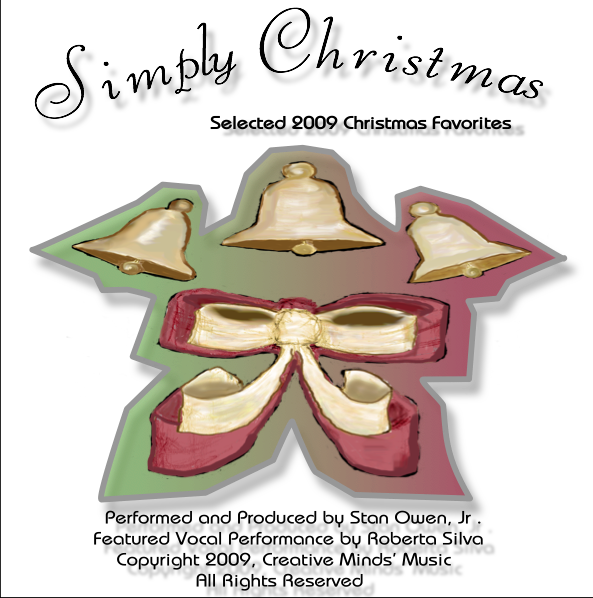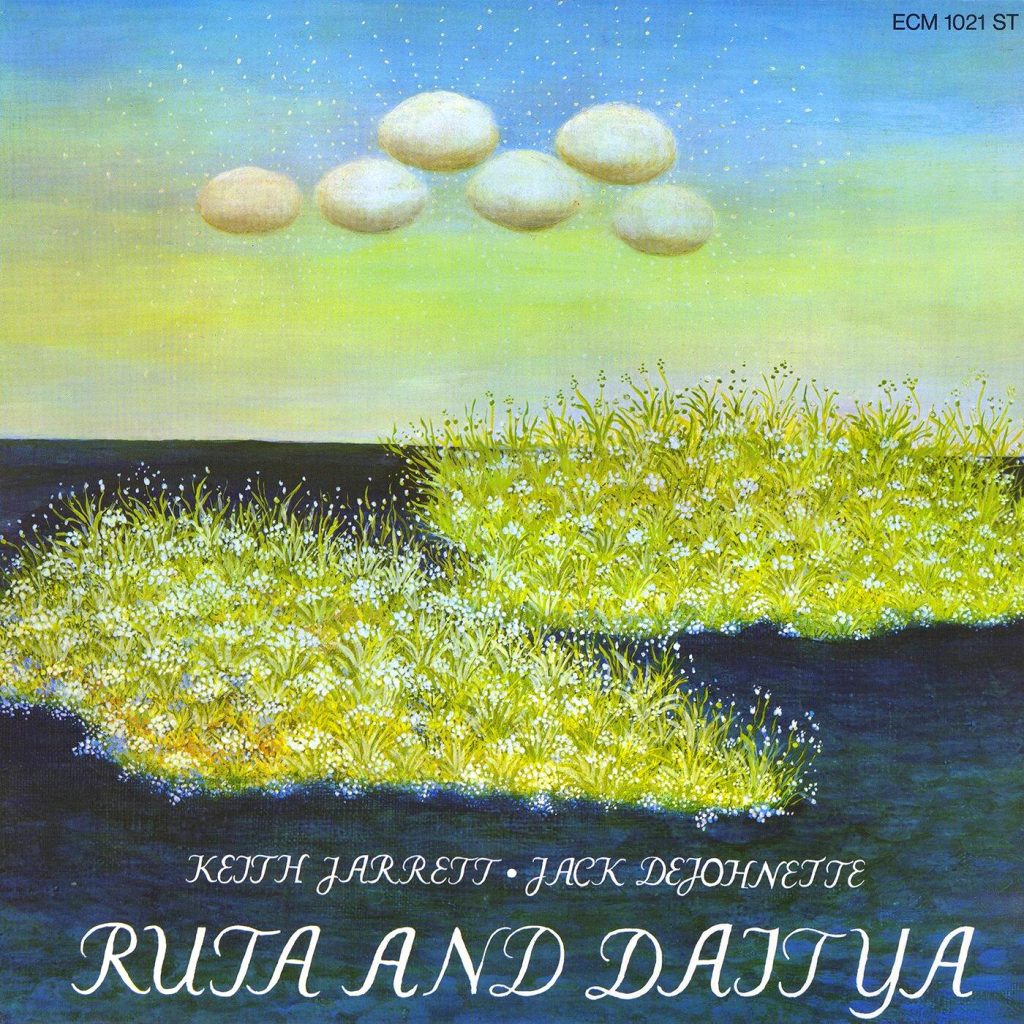 Simply Christmas Project & Art
Simply Christmas Project & Art
I am posting my 2009 Christmas recording project. You can access the CD liner-notes and original artwork by using the link provided above.
Below, I have included links to each song and notes about the performances that are not included elsewhere.
I sincerely hope that you enjoy this music.
—————————————————–
As I state in the “Simply Christmas” CD-liner notes, my Mother taught me this arrangement when I was a child. The detached pages from the “Etude” music magazine from which I read the music to perform this recording have become extremely brittle and the tape that was used to hold the pages together has not fared well during the intervening nearly-fifty years. From the extracted remnants, I was unable to discern the month and year of the issue of the magazine from which this “Fantasia” was extracted. (What is left of) the pages featured a 1945 Copyright by Theodore Presser (well-known music publisher and the publisher of the “Etude” magazine). I played this and many other pieces from Mother’s collection of Etude magazines.
I decided to (hopefully) favorably augment the original piano-only arrangement with accompanying “orchestral string sounds” by engaging one of Synthogy Ivory grand-piano’s “Synth Layers” that can be heard only when piano notes are sustained.
As a personal note, it is consistently a difficult task for me to assess and ascribe the the proper volume for a piano-only recording when it is in the same “program” with orchestral and/or band arrangements as is the case with this (“Simply Christmas”) project. It is obvious that a piano is not (and, probably should not be) as loud as a full orchestra or band. However, if the recorded piano arrangement is properly soft and the listener turns up the volume—later, when the orchestral piece plays, the volume may be uncomfortably loud to the listener. This is one of the challenges facing a mastering engineer. And, that, for better or worse, for now, is me…
This is the fourth piece of the Nutcracker Suite that I have orchestrated for synthesizer. All the orchestral instruments heard in this recording except for harp, tympani, and, triangle are “Synful Orchestra.” For this piece I used two instances of the “Synful Orchestra” instrument. This allowed me to maintain separate channels for bowed vs. pizzicato strings. The harp, tympani, and triangle sounds are ones that are “built-in” (but, still editable) to the ROMs of my trusty, now nearly 12-year-old Kurzweil K2500X synthesizer.
Since first hearing Dave Grusin’s and James Taylor’s arrangement of “In The Bleak Midwinter” on the 2004 James Taylor CD: “A Christmas Album,” I knew that I wanted to transcribe this arrangement for recording with my musical colleague and Christmas collaborator, Roberta Silva. I would have recorded this piece with Roberta last year, but did not, only because of first recording another beautiful piece (“Some Children See Him”) from the same CD. I initially began this transcription using pencil, music-manuscript paper, and lots of erasers. Actually, I transcribed only a few notes before deciding that because of the more-dense-than-two-instruments orchestration (piano, strings (violin, viola, and cello), acoustic guitar, electric guitar, bass-guitar, and percussion) I would transcribe it by looping measures in Digital Performer. While looping the CD recorded version, I rehearsed a particular instrumental part, hit record (in Digital Performer 7) to record the rehearsed part, and then advanced the looping to rehearse the next measure. That was how I transcribed the piano, acoustic guitar, electric guitar solo, and percussion parts. I transcribed the string and electric-bass parts in a more traditional, linear (start to finish) manner.
The recorded piano is one of the Synthogy Ivory virtual grand-pianos. Percussion tracks are made by a Yamaha MU100R. The acoustic guitar is actually two guitar tracks (one panned left and the other panned right and slightly (very slightly) detuned); one of the acoustic guitar programs is built-in to my Kurzweil K2500X and the other is part of Daniel Fisher’s and Sweetwater Sound’s “Ultimate Guitars” sound-sets for the K2500. The electric guitar is another K2500 built-in program.
On the evening of Wed., Dec. 23rd, 2009, Roberta and I recorded her vocal track while monitoring the instrumental tracks that I had recorded during the previous weeks. Roberta and I listened to the original D major key and found the vocal range comfortable and appropriate for her by transposing the accompaniment to C major. After only a couple of rehearsal passes, we were able to record the version heard on the recording on the third “take.” I mixed and remixed the vocal and instrumental tracks, producing several versions of the recording and the CD track-to-track volume levels and equalization during the days after our session.
I had originally planned for “In The Bleak Midwinter” to be the second recording on the CD. However, because of Roberta’s beautiful performance, I decided that her performance should be the final one.



Recent Comments